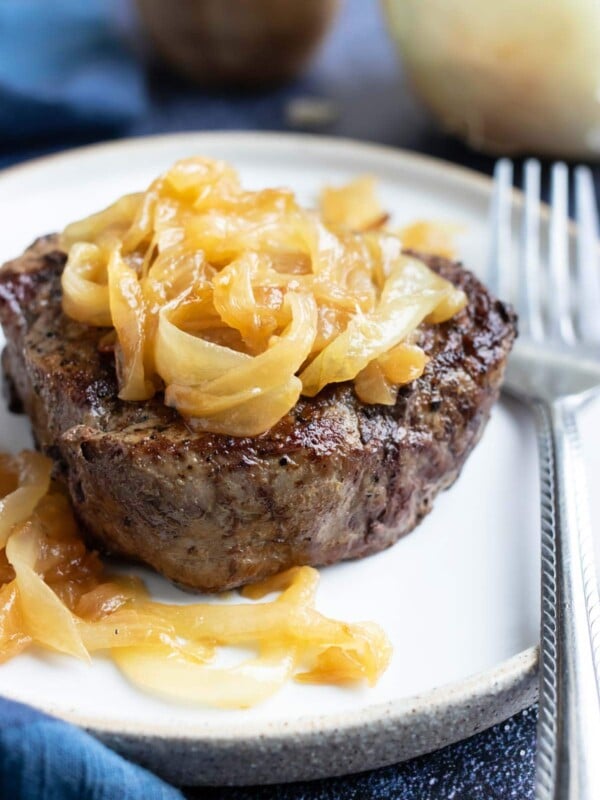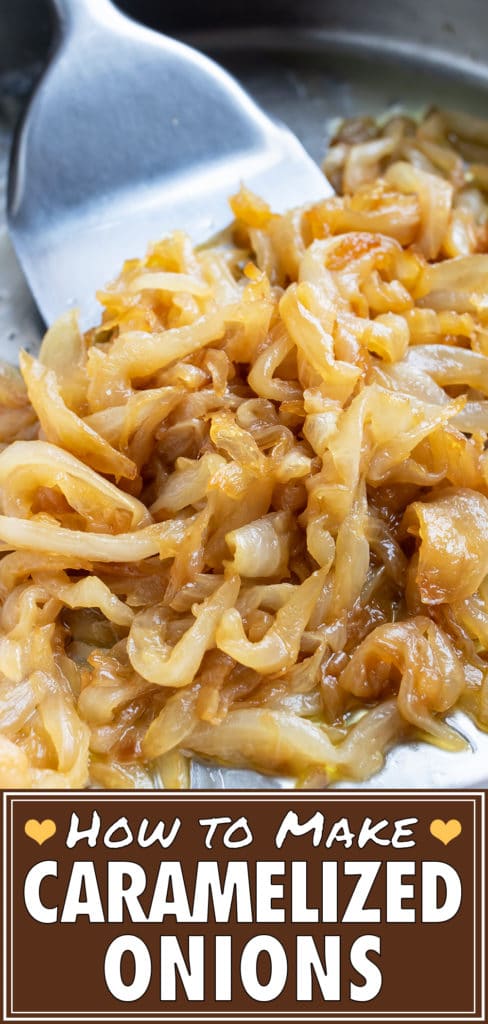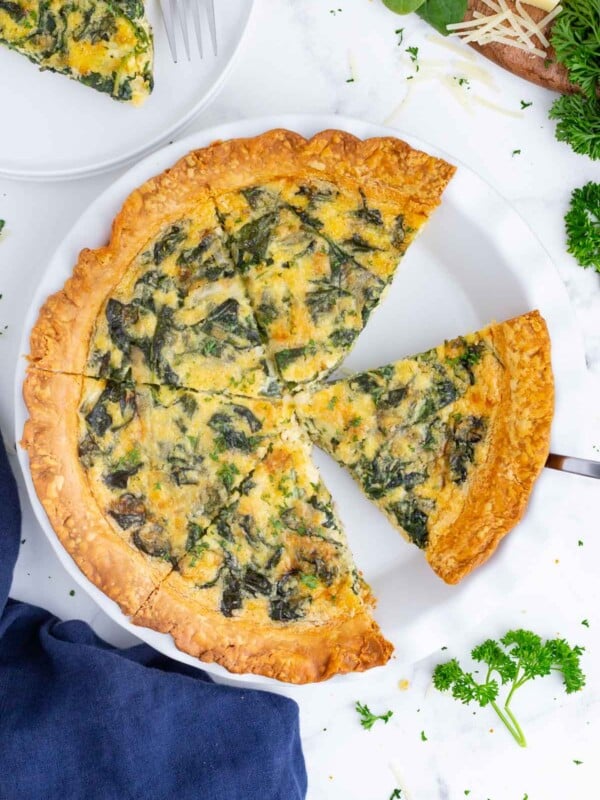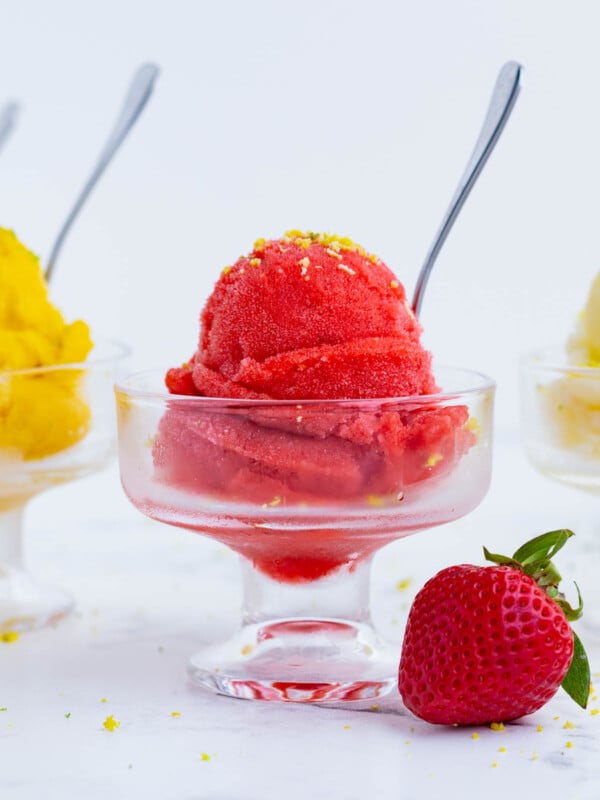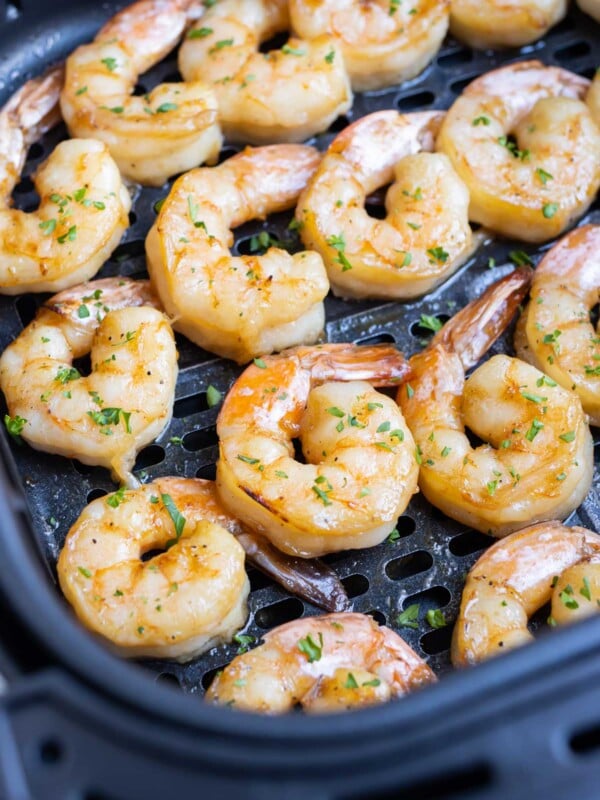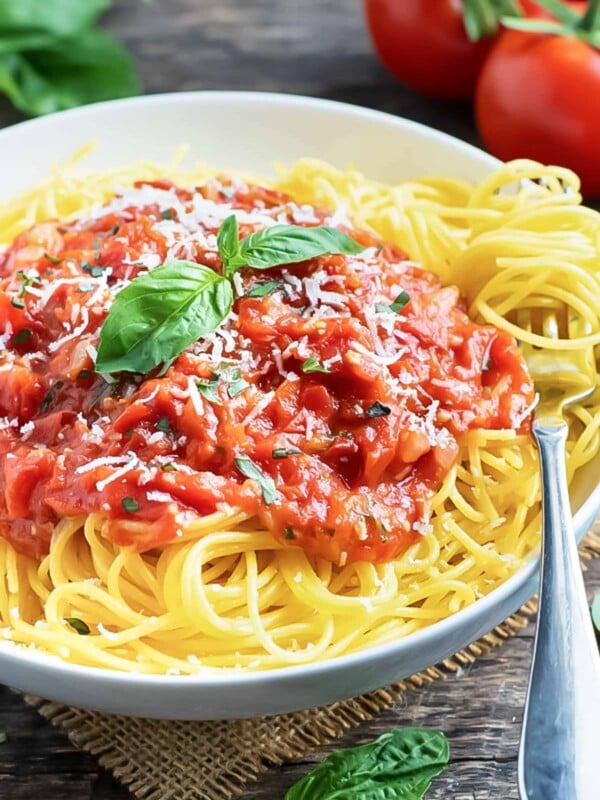Easy Sautéed Onions for Steak
There are few things more addictive than a skillet of beautifully sautéed onions.
Oftentimes, I find their sweet and savory flavor to be the PERFECT accompaniment to bring a recipe to the next level. Whether as a topping for a steak or a burger, mixed into a quiche, or even served as the base to a rich French onion soup, they never disappoint.
It can be tempting to try and quickly whip up caramelized onions. Don’t! There’s simply no replacement for the rich depth of flavor that comes with a little time and patience.
Allow the pan-fried onions the time to fully release their natural sugars and brown all the way through. You can be assured that their flavor will far surpass that of any shortcut. And you can’t beat this simple recipe.
So while this isn’t a technique that can be done last minute, it is still a super easy way to add a rich, savory, buttery flavor to your favorite recipes!
Table of Contents
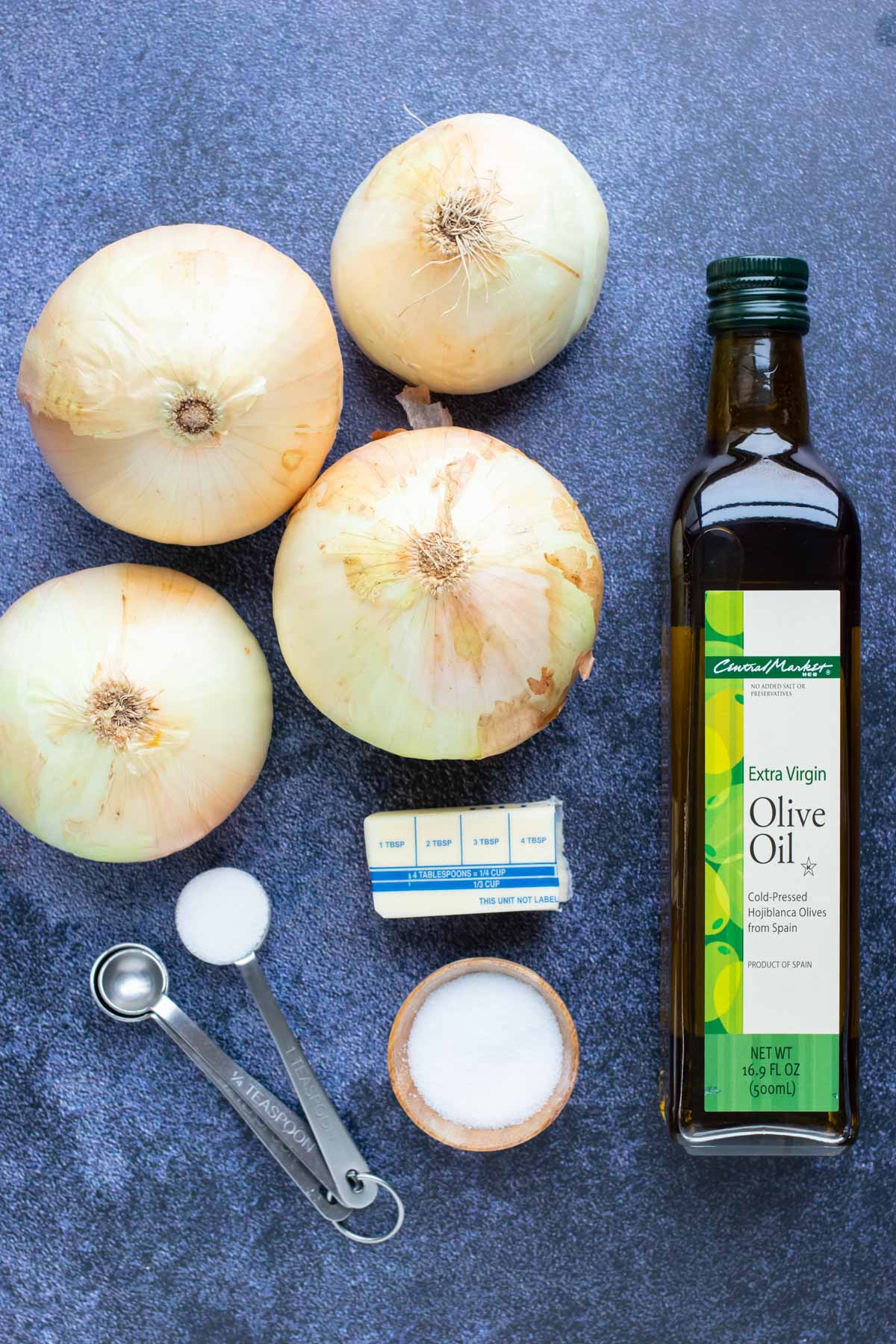
Ingredients
- Onions. Sweet onions like Vidalias are the best type to caramelize due to their high natural sugar content. Any other variety, like yellow or white onions, will work too. But you may need to supplement with a pinch of sugar to reach the desired sweetness level. Types with strong flavor, like red onions, aren’t the best option.
- Oil. Because of the relatively low temperature at which caramelization occurs, any type of oil may be used, regardless of smoke point. A more mildly flavored oil, like vegetable or avocado oil, is recommended in order to avoid overpowering the sweetness of the onions.
- Butter. A high-quality butter is added toward the end of cooking. It provides an extra layer of richness and flavor. This may be omitted or substituted with vegan butter for a dairy-free diet, or with ghee for a Paleo or Whole30 diet.
How to Make Sautéed Onions
Please see the recipe card below for more detailed ingredient amounts.
1. Slice the Onions
The thinner the onions are sliced, the more quickly they will caramelize. For the best results, cut the onions about ¼-inch thick with a sharp knife on a cutting board. Separate any slices that are stuck together so they cook evenly.
For more information, learn how to cut an onion.
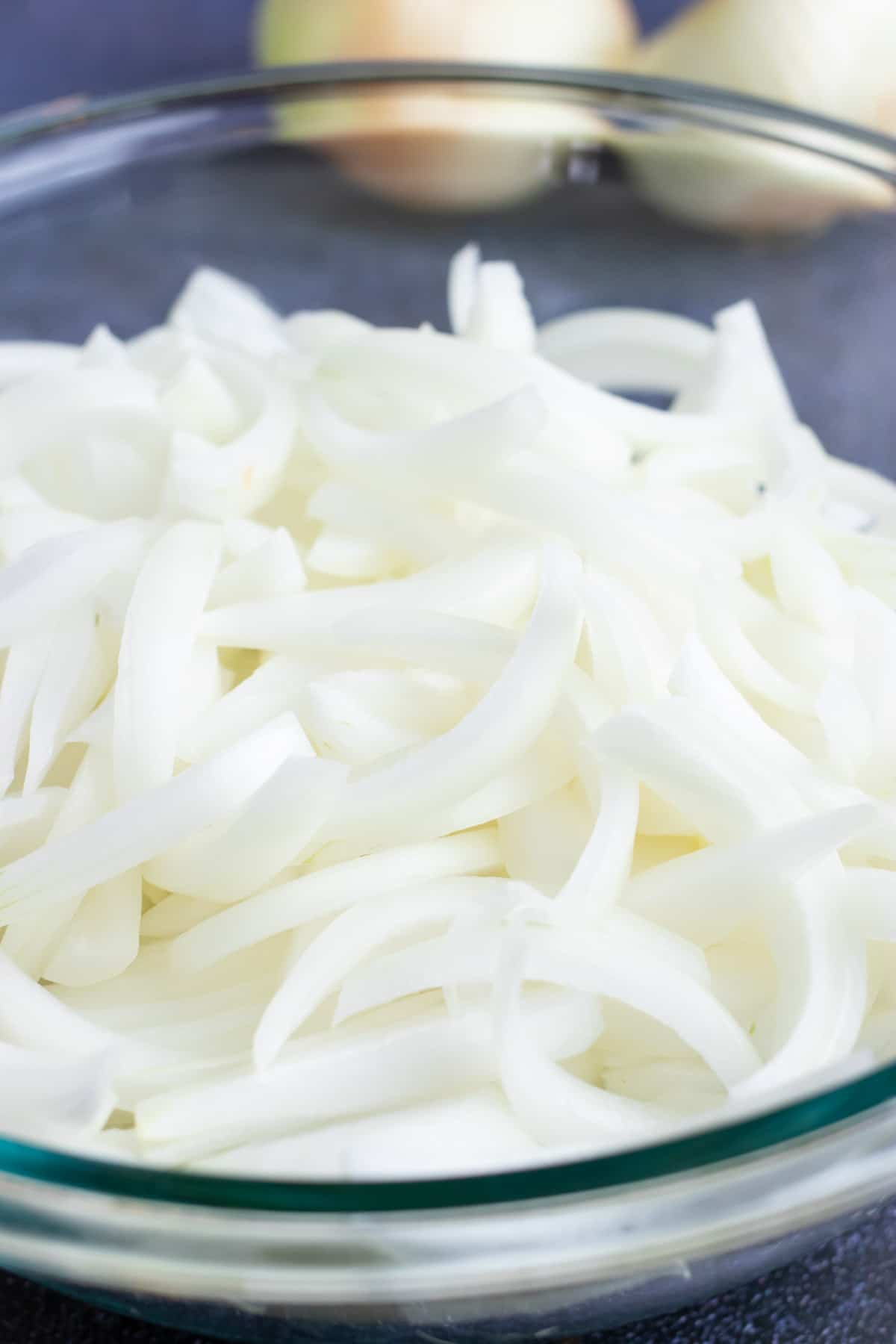
2. Prep the Skillet
Heat oil in a large stainless steel skillet over medium-low heat. Add the onions. Stay away from medium or medium-high heat or they’ll cook too fast. Be sure to use a large skillet so you can spread the onions out.
Add a pinch of salt early on to draw moisture out of the onions. This allows them to brown more thoroughly, giving them more flavor in the process.
The onions should be sizzling, but not so hot that they immediately begin browning. Otherwise, the onion slices will burn before they have a chance to caramelize. If it looks like they’re starting to cook too fast, simply lower the heat, add a little water, and scrape any browned bits with a spatula or wooden spoon off the bottom of the pan and into the cooking onions.
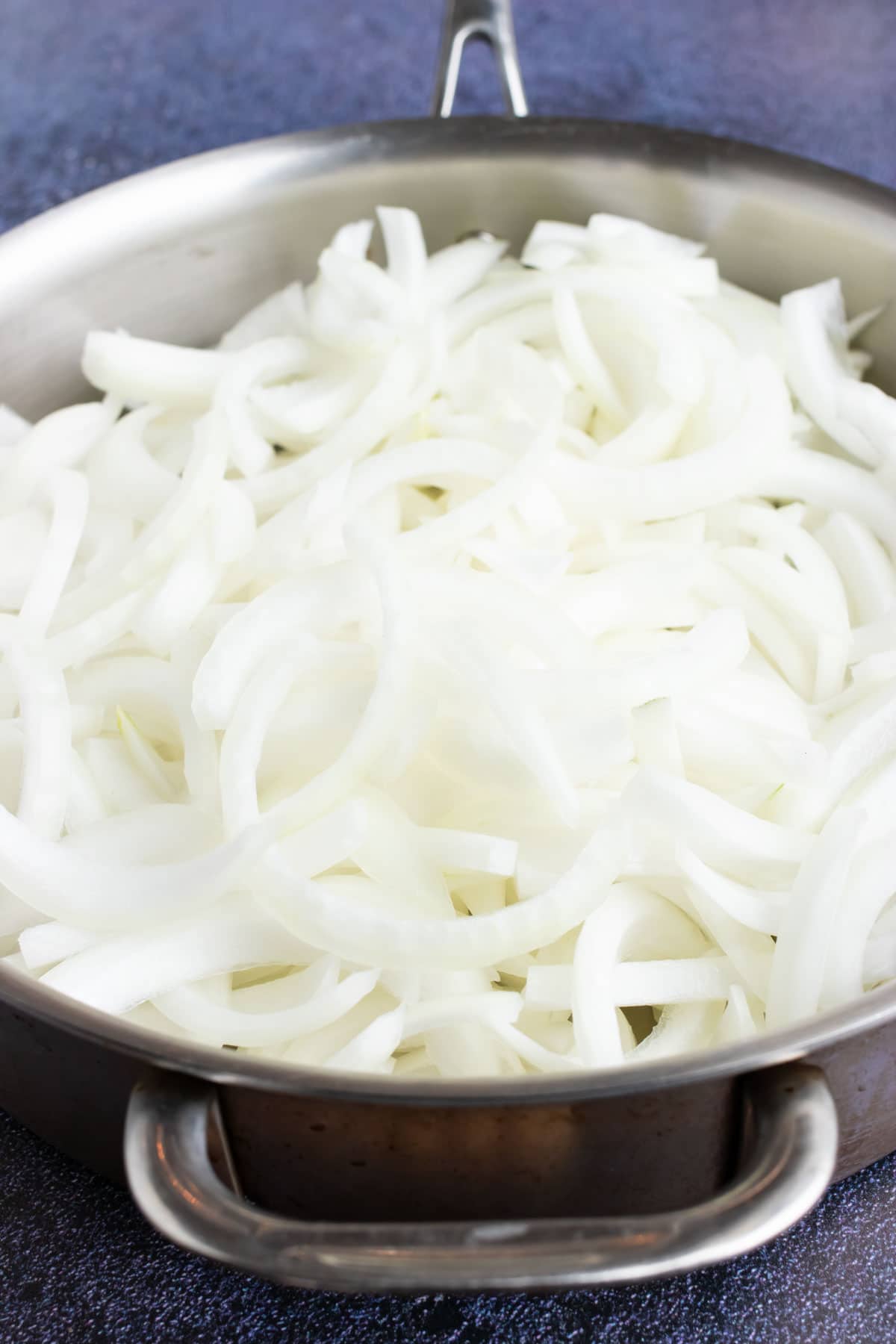
3. Cook Low and Slow
Sauté onions for 40-50 minutes, stirring occasionally.
Once they have begun to soften, stir them every 3-5 minutes. At the 30-minute mark, when the onions have turned a light yellow color, add the butter and stir to combine. This allows the onions to soak up that extra bit of fat and salt from the butter, amplifying their flavor without giving the butter time to burn.
Continue cooking as directed until they have reached a deep golden brown and the ideal sweet, savory taste. Monitor them closely at this point, as they could burn easily.
A small pinch of salt or sugar may also be used here, to further highlight the sweet and savory flavors, to taste. If you’re not serving them immediately, keep the delicious onions in an airtight container in the fridge for 3 to 5 days.
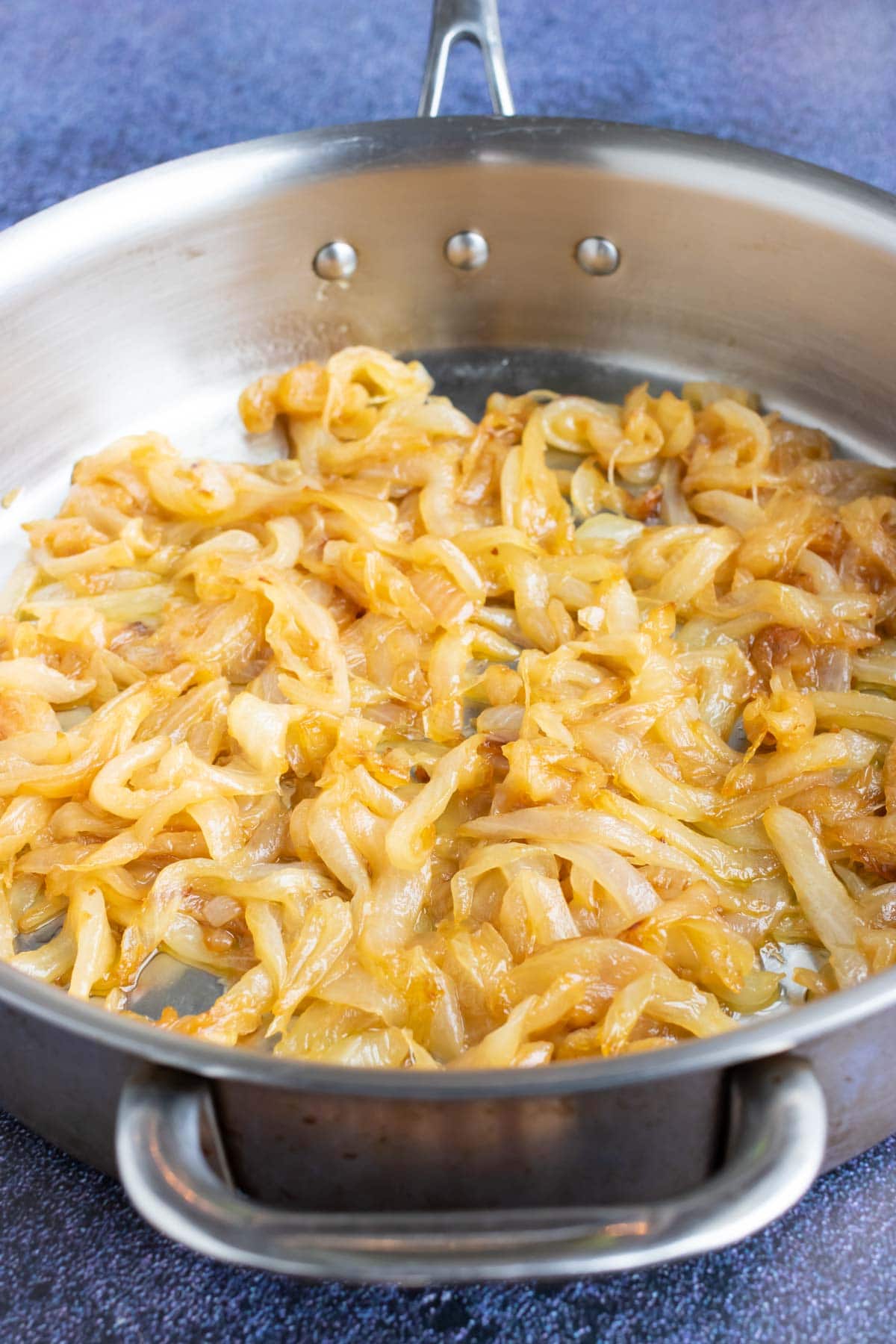
FAQs
Sweet varieties of onions are best for sautéing or caramelizing due to their naturally high sugar content. Vidalia onions are recommended. They can be easily found at most grocery stores, but yellow onions are a good second best.
If you happen to burn some of the onions, you can save them by adding a few tablespoons of water to the skillet to deglaze it. Scrape the bottom of the skillet to remove any loose bits or pieces. Mix them in with the onions and continue cooking as directed. To avoid this altogether, make sure to use medium-low heat.
Generally, it should take from 45-60 minutes to get a pan of thoroughly, naturally caramelized onions. This varies depending on factors like how thin the onions are cut, the heat of the pan, whether any shortcuts are used, and more.
To reduce the cooking time by about 10 minutes, add ¼-cup of water to the skillet full of onions, cover with a lid, and cook over medium heat for 10 minutes. This speeds up the phase of simply softening and cooking the onions so that they can begin browning quickly. Once softened, uncover the onions and continue cooking them as directed for an additional 20-30 minutes, or until caramelized.
Additionally, a pinch of baking soda can be added to the onions once softened, to help encourage browning. This may change the texture of the onions, however.
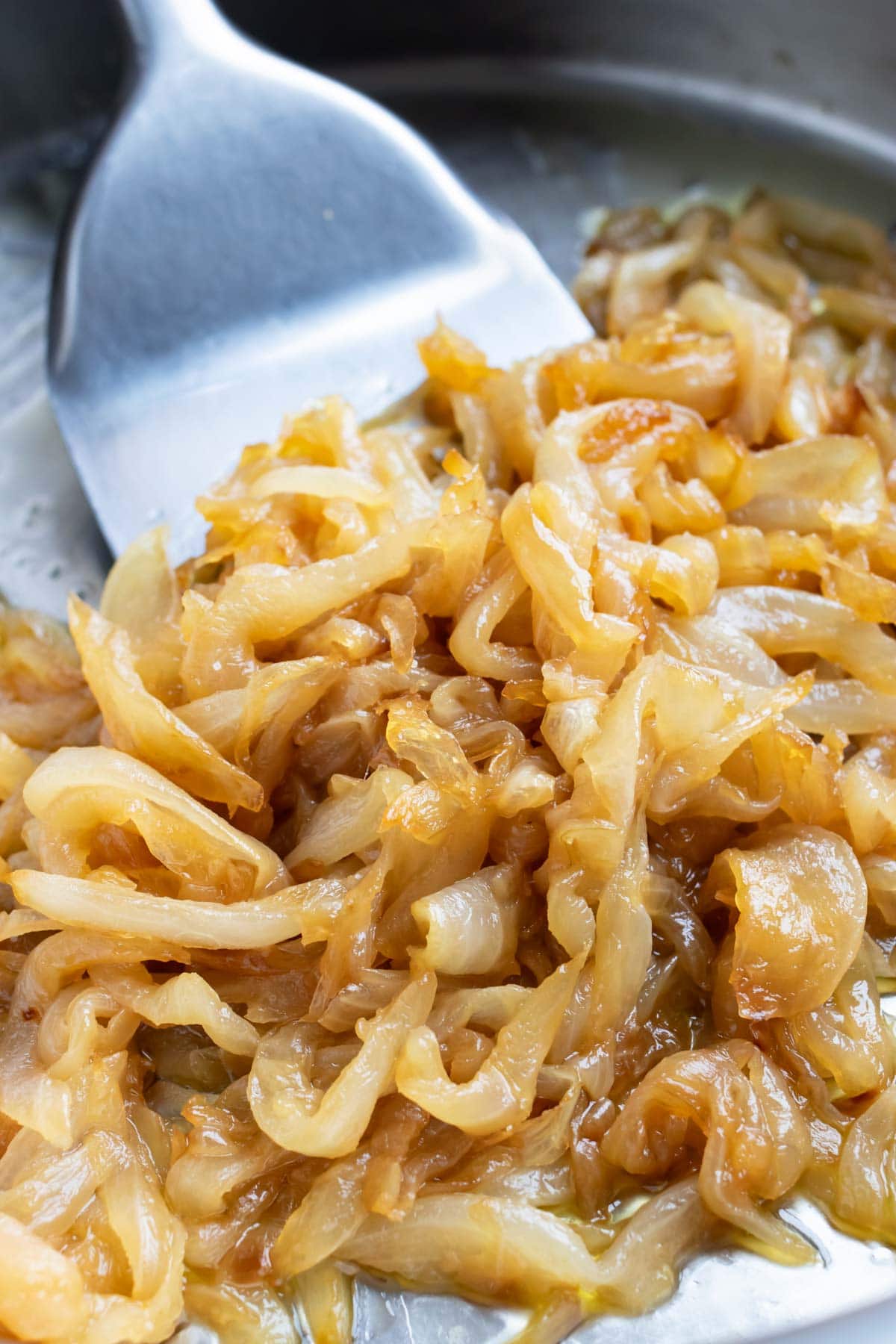
What to Serve with Sautéed Onions
This sweet delicacy is most often known for accompanying a juicy piece of steak like a filet mignon (along with garlic herb butter and sautéed mushrooms!)
There are also quite a few other favorite dishes that can be taken over-the-top with the addition of the buttery, rich flavor of these onions. They’re the perfect addition to Air Fryer Burgers or Salmon Burgers.
You can pair this sautéed onions recipe with a Butternut Squash Pizza or with Honey Balsamic Chicken. I love these perfect sautéed onions on a baguette with Tomato Bruschetta, as well.
They also add great flavor and a little pizzazz to hot dogs!
Tap stars to rate!
Sautéed Onions for Steak
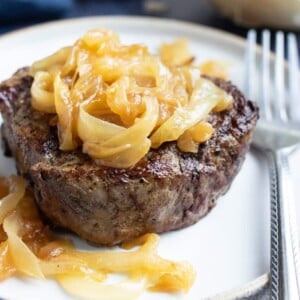
email this recipe!
Ingredients
- 2 lbs. sweet onions about 4-5 small onions
- 2 tbsp. olive oil
- 1 tbsp. butter
- ½ tsp. salt to taste
- sugar optional*
- water optional*
Instructions
- Prepare the Onions: Thinly cut onions into ¼-inch slices.2 lbs. sweet onions
- Cook in a Skillet: Add olive oil and onions to a large stainless steel skillet over medium-low heat. Cook onions for 30-50 minutes, stirring every 3-5 minutes.* (In the beginning you can wait a little bit longer between stirs. Towards the end you will want to keep a close eye on the onions, to prevent burning.)2 tbsp. olive oil, ½ tsp. salt
- Add Butter: After about 25 minutes, the onions will start to become a light yellow color. Add butter and stir to combine. You’ll know the onions are done cooking when they reach a caramel color and have a natural sweetness to them.1 tbsp. butter, sugar, water
- Serve sautéed onions with your favorite filet mignon, baked chicken, or recipe of choice.
Tap stars to rate!
Video
Notes
- Select steel. A large stainless steel skillet is the ideal tool for caramelizing onions because it conducts heat the best and helps food brown more easily than a non-stick pan.
- Give them room. Use a big enough pan that the onions aren’t crowded before they’ve started shrinking down, to ensure they all cook at the same rate.
- Use more than butter. While butter adds a lot of amazing flavor to caramelized onions, it tends to burn, so a normal cooking oil should be used for the initial cooking process.
- Quicker caramelization. A pinch of baking soda added to the onions can help them caramelize faster by encouraging browning, but remember that doing so will break them down and give them an almost jam-like consistency.
- Remember to deglaze. There is a TON of flavor packed into the brown bits at the bottom of the pan, so be sure to deglaze with water, stock, or even alcohol like white wine for a bit of extra flavor when making this caramelized onion recipe.
Nutrition
Nutrition information is automatically calculated, so should only be used as an approximation.

